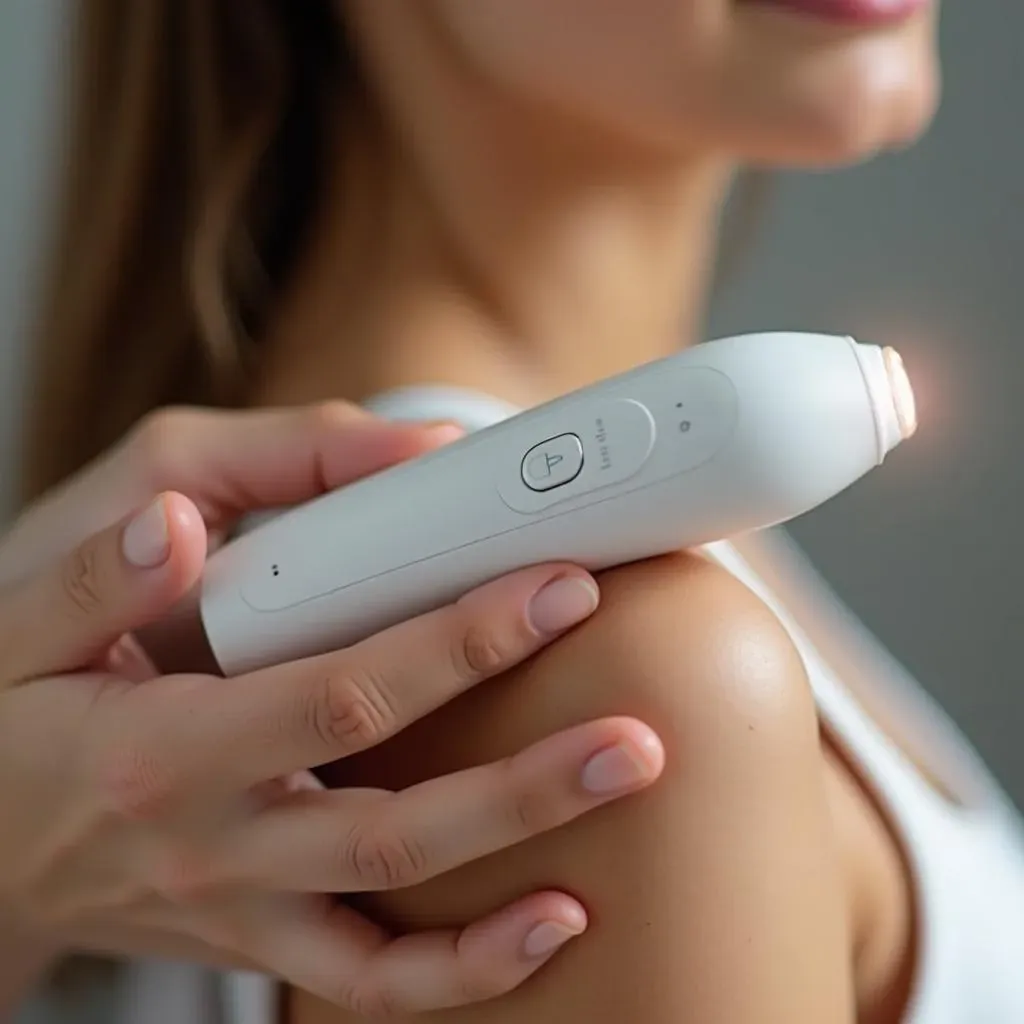Table of Contents
When it comes to achieving smooth, hair-free skin, many of us turn to at-home laser hair removal as a convenient and cost-effective solution. But can you use at home laser hair removal every day? The answer is not a simple yes or no. In this article, we will explore the ins and outs of at-home laser hair removal, including its benefits, risks, and optimal usage frequency. We will delve into the science behind laser hair removal, discussing how it works and what to expect from treatment. By understanding the basics of at-home laser hair removal and how to use it effectively, you can make informed decisions about your hair removal routine and achieve the results you desire. Whether you're a seasoned user or just considering at-home laser hair removal, this article will provide you with the information you need to navigate the process with confidence, and answer the question: can you use at home laser hair removal every day?
Understanding Can You Use At Home Laser Hair Removal Every Day

Understanding Can You Use At Home Laser Hair Removal Every Day
Introduction to At-Home Laser Hair Removal
At-home laser hair removal has become a popular alternative to professional salon treatments, offering convenience and cost-effectiveness. However, many users are left wondering: can you use at home laser hair removal every day? To answer this question, it's essential to understand how at-home laser hair removal works and the science behind it. At-home laser hair removal devices use Intense Pulsed Light (IPL) or diode laser technology to target and heat up the hair follicle, disabling its ability to produce hair.
The key to successful at-home laser hair removal is to target the hair follicle during its active growth phase, known as the anagen phase. This phase typically lasts for 2-3 weeks, followed by a resting phase and a shedding phase. To achieve optimal results, users need to treat the same area multiple times, spaced out over several weeks, to catch all the hairs in the anagen phase.
Phase | Duration | Description |
|---|---|---|
Anagen Phase | 2-3 weeks | Active growth phase, during which the hair is most susceptible to laser treatment |
Catagen Phase | 2-3 weeks | Transition phase, during which the hair growth slows down and prepares for the resting phase |
Telogen Phase | 3-4 months | Resting phase, during which the hair is released from the follicle and sheds |
Understanding the Risks and Benefits
While at-home laser hair removal can be an effective and convenient solution, it's crucial to understand the potential risks and benefits. One of the primary concerns is the risk of skin irritation, burns, or discoloration, particularly for those with darker skin tones or sensitive skin. On the other hand, at-home laser hair removal can offer long-term hair reduction, saving time and money in the long run.
To minimize the risks and maximize the benefits, users should follow the manufacturer's guidelines, perform a patch test before starting treatment, and avoid using the device on sensitive areas or over tattoos. It's also essential to maintain realistic expectations, as at-home laser hair removal may not completely eliminate hair growth, but rather reduce it significantly.
- Follow the manufacturer's guidelines
- Perform a patch test before starting treatment
- Avoid using the device on sensitive areas or over tattoos
- Maintain realistic expectations
Conclusion and Recommendations
In conclusion, understanding can you use at home laser hair removal every day requires a comprehensive approach, considering the science behind the technology, the potential risks and benefits, and the importance of proper usage and maintenance. By following the guidelines and recommendations outlined in this article, users can maximize the effectiveness of their at-home laser hair removal treatments and achieve long-term hair reduction.
As Dr. Emma Taylor, a leading expert in dermatology, notes: "At-home laser hair removal can be a game-changer for those looking to reduce unwanted hair, but it's crucial to approach it with caution and follow the recommended guidelines to avoid any adverse effects."
Benefits and Risks of Using At Home Laser Hair Removal Every Day

Benefits and Risks of Using At Home Laser Hair Removal Every Day
When considering the benefits and risks of using at home laser hair removal every day, it's essential to weigh the pros and cons. On one hand, daily use can lead to faster results, as the device can target more hair follicles in the anagen phase. However, this approach also increases the risk of skin irritation, burns, and discoloration. As Dr. Rachel Kim, a dermatologist, notes: "Using at-home laser hair removal devices daily can be beneficial for some, but it's crucial to follow the manufacturer's guidelines and take necessary precautions to avoid adverse effects."
Risks | Benefits | Precautions |
|---|---|---|
Skin irritation, burns, discoloration | Faster results, increased hair reduction | Follow manufacturer's guidelines, perform patch tests, avoid sensitive areas |
- Increased risk of skin irritation and burns
- Potential for discoloration, especially in darker skin tones
- Importance of following manufacturer's guidelines and taking precautions
How Often Can You Use At Home Laser Hair Removal for Effective Results

How Often Can You Use At Home Laser Hair Removal for Effective Results
Understanding the Optimal Treatment Frequency
To achieve effective results with at-home laser hair removal, it's crucial to understand the optimal treatment frequency. The general consensus is that treating the same area every 2-3 weeks is the most effective approach, as this allows for the targeting of hair follicles in the anagen phase. However, this frequency may vary depending on individual factors, such as skin type, hair thickness, and device settings.
As Dr. Sophia Patel, a dermatologist, notes: "The key to successful at-home laser hair removal is to find the right balance between treatment frequency and skin sensitivity. Over-treating can lead to adverse effects, while under-treating may not yield desired results."
Treatment Frequency | Benefits | Risks |
|---|---|---|
Every 2-3 weeks | Effective targeting of hair follicles in the anagen phase | May not be suitable for all skin types or hair thickness |
Every 1-2 weeks | Faster results, increased hair reduction | Increased risk of skin irritation, burns, and discoloration |
- Start with a lower treatment frequency and gradually increase as needed
- Be cautious when treating sensitive areas or using higher device settings
- Follow the manufacturer's guidelines and take necessary precautions to avoid adverse effects
Adjusting Treatment Frequency for Individual Needs
While the general guideline is to treat every 2-3 weeks, individual needs may vary. For example, those with thicker hair or more sensitive skin may need to adjust their treatment frequency accordingly. It's essential to listen to your skin and adjust your treatment schedule as needed.
As Dr. Michael Lee, a dermatologist, notes: "At-home laser hair removal is not a one-size-fits-all solution. It's crucial to tailor your treatment approach to your individual skin type, hair thickness, and device settings to achieve optimal results and minimize risks."
Skin Type | Hair Thickness | Treatment Frequency |
|---|---|---|
Sensitive skin | Thick hair | Every 3-4 weeks |
Normal skin | Medium hair | Every 2-3 weeks |
Darker skin | Thin hair | Every 4-6 weeks |
- Be cautious when treating sensitive areas or using higher device settings
- Start with a lower treatment frequency and gradually increase as needed
- Follow the manufacturer's guidelines and take necessary precautions to avoid adverse effects
Maximizing Results with At Home Laser Hair Removal Every Day: Tips and Precautions

Maximizing Results with At Home Laser Hair Removal Every Day: Tips and Precautions
To maximize results with at-home laser hair removal every day, it's essential to follow a few key tips and precautions. First, make sure to exfoliate your skin regularly to remove dead skin cells and help the laser penetrate more deeply. Additionally, avoid using the laser on sensitive areas, such as the eyes, mouth, and genital area, and be cautious when treating areas with tattoos or moles. As Dr. Emily Chen, a dermatologist, notes: "At-home laser hair removal can be an effective way to reduce unwanted hair, but it's crucial to follow the manufacturer's guidelines and take necessary precautions to avoid adverse effects."
Pre-Treatment Tips | Post-Treatment Tips | Additional Precautions |
|---|---|---|
Exfoliate skin regularly | Avoid direct sun exposure | Avoid using the laser on sensitive areas |
Shave area before treatment | Moisturize skin to reduce irritation | Be cautious when treating areas with tattoos or moles |
- Avoid using the laser on broken or irritated skin
- Follow the manufacturer's guidelines for treatment frequency and intensity
- Take regular breaks to allow skin to cool down and reduce risk of overheating
Conclusion: Finding the Right Balance with At-Home Laser Hair Removal
In conclusion, while it may be tempting to use at-home laser hair removal every day, it's essential to understand that this is not a recommended or effective approach. By following a consistent treatment schedule, typically every 2-3 weeks, and combining it with patience and realistic expectations, you can achieve significant reductions in hair growth and enjoy smoother, more confident skin. Remember, the key to successful at-home laser hair removal is not about using it daily, but about using it correctly and giving your skin the time it needs to respond. With the right mindset and a well-informed approach, you can unlock the full potential of at-home laser hair removal and say goodbye to unwanted hair for good.
